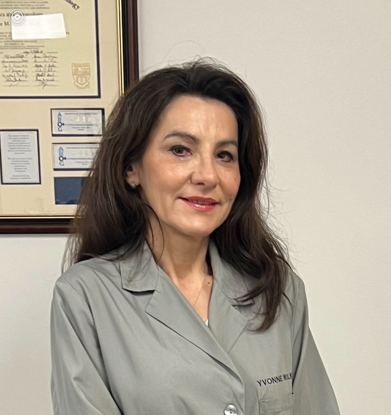Annual Pap Tests Are Key for Cervical Cancer Screening
- Category: Health & Wellness, Women's Health
- Posted On:
- Written By: LVMC

Ask most women which medical procedure they least look forward to and you will likely hear a large percentage say, “The annual Pap test.” Even though this exam can be daunting and sometimes uncomfortable, it is very important -- it can help the physician determine if there is concern about cervical cancer.
After age 21, it is recommended that women undergo cervical cancer screening via the Papanicolaou test, more commonly known as a “Pap smear” or Pap test. During this test, a sampling of cells is collected from the woman’s cervix and that sample is sent to the lab. At the lab, it is tested for the presence of pre-cancerous or cancerous cells.
In recent years, research has shown that most cervical cancers are related to the human papillomavirus (HPV) and available screening tests now include both a Pap test and an HPV test.
The link to between cervical cancer and HPV is so strong that cervical cancer is now considered to be sexually transmitted. In 2006, the HPV vaccination became available for women, to help prevent HPV infections. Four years later, the vaccine was made available for males, as they too can become infected with HPV. According to the Centers for Disease Control (CDC), the vaccine has been found to have greatly reduced the incidence of HPV. Recent studies also show a direct correlation between the HPV vaccine and decreased cervical cancer incidence, as well as other HPV associated cancers. There are currently no screening techniques available for other HPV-associated cancers. More research is currently being done in this arena.
Regular screening for cervical cancer should begin at age 21, even if the patient has no symptoms, and regardless of when they became sexually active. The Pap test alone is sufficient because women younger than 30 are more likely to clear HPV infections and have spontaneous normalization of cervical cells. If a Pap test is positive, the healthcare provider will decide whether to do an HPV test or to repeat a Pap test sooner. If the Pap test is negative, it can be repeated in three years.
After age 30, women should be screened every three-to-five years with either Pap or HPV tests or a combination of both, which is also called co-testing. Your provider will determine which is right for you based on your medical history and physical exam. This schedule may be maintained as long as your tests remain negative. If there is a positive result, however, it will require closer follow up and intervention.
As a woman ages from 30 to 65, it is recommended they continue the schedule of screening tests every three-to-five years. The decision to stop screening should be a shared decision between a woman and her provider. Information such as prior results, medical and surgical history, and life expectancy should all be considered when deciding whether to continue or stop screening.
Of course, physicians would recommend more frequent screening if a woman is considered high risk for cervical cancer due to persistent infection with high-risk strains of HPV, lack of early screening, prior positive screening tests, medical history, and/or immunosuppression.
There are other forms of cervical cancer that are not associated with the Human Papillomavirus, but those forms are generally rare.
Early detection is the key to successful treatment and survival of cervical and other reproductive cancers. It is important to keep up with screening tests for cervical cancer -- but maintaining a healthy lifestyle can help decrease the risk for other cancers.
Things you can do to decrease your risk include:
- Maintaining a healthy weight,
- Eating a diet rich in vegetables, fruits, whole grains, and low in saturated and trans fats
- Keeping physically active
- Avoiding tobacco products
- Preventing sexually transmitted infections






.jpg)